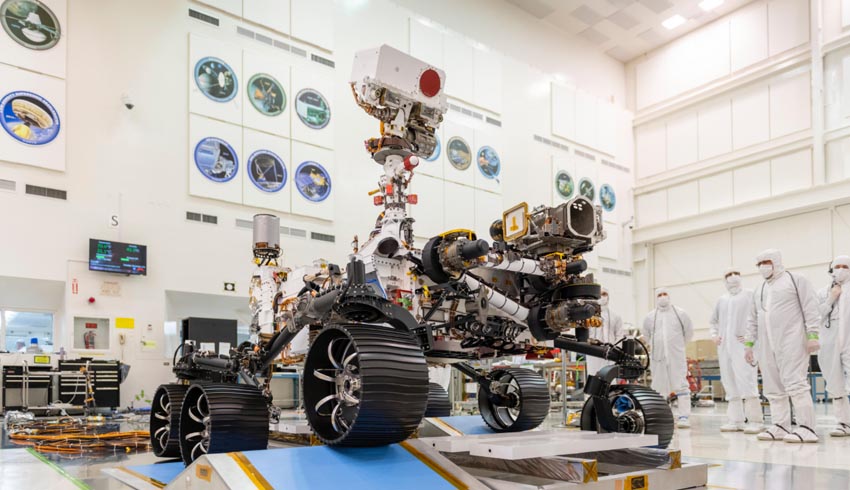The mission’s four major scientific objectives include studying the planet’s habitability, seeking biosignatures of past life, collecting core samples of the surface, and testing oxygen production in the planet’s atmosphere.
Northrop Grumman’s LN-200S IMU will be mounted deep inside the rover, providing data during the ground mission. The LN-200S is a reliable, low-cost, lightweight IMU featuring three fibre optic gyroscopes and three silicon micro electro-mechanical systems (MEMS) accelerometers.
Brandon White, vice president of navigation and positioning systems at Northrop Grumman Mission Systems sector, explained, “The success of this incredible mission of scientific exploration is directly linked to the proven reliability of Northrop Grumman’s inertial navigation solutions.”
As the Perseverance Mars Rover traverses the surface of Mars, the LN-200S will provide the attitude and acceleration information used by the Rover’s computer for guidance.
The LN-200S has been used on all previous Mars Rover missions including 2003’s Spirit and Opportunity, and 2012’s Curiosity, which is still operating almost eight years beyond its initial two-year mission.
“NASA/JPL came to us for its historic Mars missions because of the extended performance capabilities of our LN-200S. We will be anxiously awaiting to see what the Perseverance discovers, as will the rest of the world,” White added.
The LN-200S underwent vigorous testing to validate its extended life capability for the Perseverance Mars rover mission, which is expected to last 1.5 Mars years, or about 1,071 Earth days. Previous NASA/JPL Mars missions lasted far beyond their initial design requirements, and the LN-200S had to prove its reliability to make it on board. The Opportunity, for example, operated for almost 15 Earth years (eight Mars years) – far beyond its scheduled 90-day mission – and the LN-200S continuously operated throughout the full span of that Rover’s journey.

